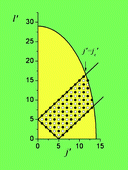On the theory of complex-forming chemical reactions: effect of parity conservation on the polarization of differential cross sections
Abstract
For complex-forming triatomic reactions such as the prototypical insertion reactions intensively studied in the last few years, quantum mechanical differential cross sections (DCS) present sharp forward/backward polarization peaks when the reagent rotational angular momentum quantum number j is zero. Moreover, the size of the peaks decreases rapidly with increasing j values so that for j = 3, they are no longer visible. In contrast, the polarization peaks are always missing in the classical mechanical DCSs. Apart from the peaks, however, the quantum and classical DCSs are usually in good agreement. In a recent rapid communication, we showed that the fundamental reason for the previous differences in the quantum and classical scenarios is that parity conservation leads in quantum mechanics to an angular momentum constraint without equivalent in classical mechanics. We also proposed a parity-restoring approximation leading to an accurate semi-classical description of the peaks. While only the main lines of the demonstration were given in the communication, we report here the whole developments. We also analyse why the peaks disappear when the reagent diatom is rotationally excited. As a by-product of the previous developments, we finally discuss the possibility of a general statistico-dynamical semiclassical approach.


 Please wait while we load your content...
Please wait while we load your content...